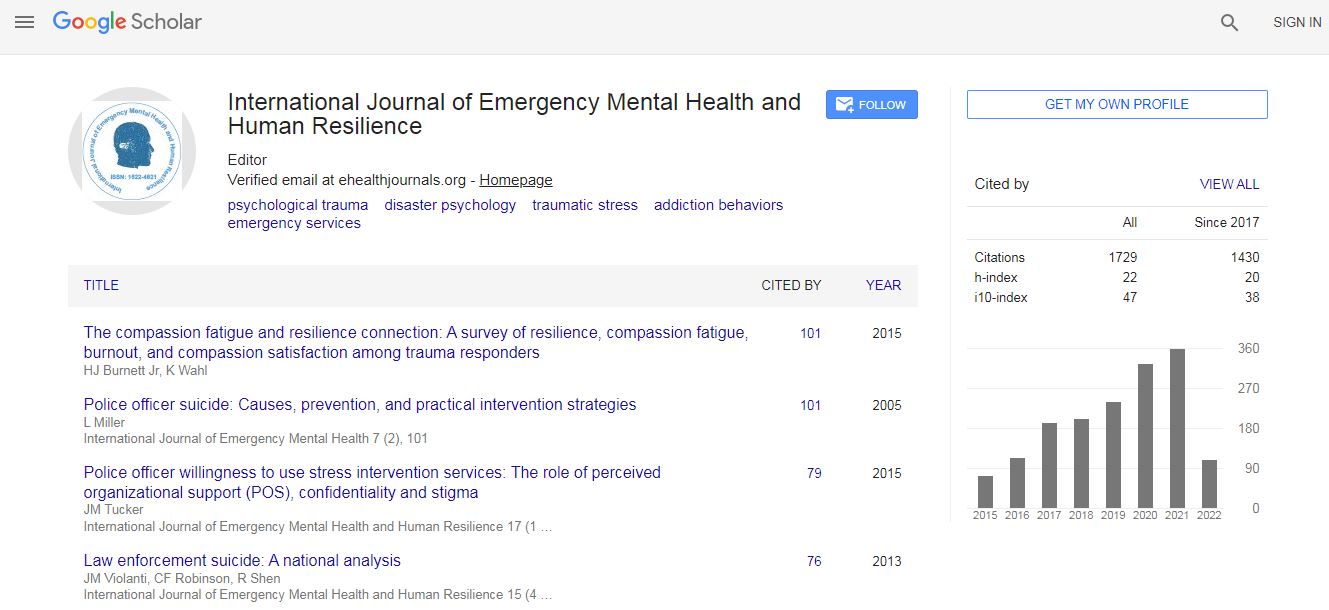Our Group organises 3000+ Global Conferenceseries Events every year across USA, Europe & Asia with support from 1000 more scientific Societies and Publishes 700+ Open Access Journals which contains over 50000 eminent personalities, reputed scientists as editorial board members.
Open Access Journals gaining more Readers and Citations
700 Journals and 15,000,000 Readers Each Journal is getting 25,000+ Readers
Google Scholar citation report
Citations : 4948
Indexed In
- Index Copernicus
- Google Scholar
- CiteFactor
- Publons
- Pubmed
- science Gate
- scispace
- world cat
Useful Links
Related Subjects
Share This Page
Release hallucinations: The mental torment of the sane individual
2nd International Conference on Mental Health & Human Resilience
Lisa Trepanier
University of Toronto, Canada
ScientificTracks Abstracts: IJEMHHR
Abstract
Some clinical professionals are still unaware that release hallucinations can accompany sensory decline. Release hallucinations (aka Charles Bonnet Syndrome) are so-named due to the theory that afferent stimuli association cells discharge spontaneously due to insufficient inhibition from authentic external stimuli. These release hallucinations are spontaneous, well-formed and vividly colored and detailed. The phenomena was first described in 1760 by the French naturalist and philosopher Charles Bonnet but it was first called ├ó┬?┬?release hallucinations├ó┬?┬Ł in 1967 by the Swiss physician George De Morsier, originally omitting ├ó┬?┬?mental deficiency├ó┬?┬Ł as diagnostic criteria. Later research disagreed and included ├ó┬?┬?brain dysfunction├ó┬?┬Ł as criteria. Prevalence is estimated at 11-15% in the visually impaired. The majority of patients are otherwise mentally sound and sane. Many patients are hesitant to come forward for fear of being considered insane or ├ó┬?┬?crazy├ó┬?┬Ł. They are often misdiagnosed with psychosis or dementia. Studies show receding hallucinations as the sensory modality progressively deteriorates and is eventually lost. Release hallucinations therefore appear to occur within a certain window of sensory deficiency and loss. There are currently no reliable treatments but case studies suggest that restoration of the lost sensory modality can result in the elimination of the release hallucinations. Both visual and auditory relapse hallucinations will be discussed.Biography
Lisa Trepanier has completed her PhD at York University and Postdoctoral studies from the University of Toronto, School of Medicine, Department of Psychiatry. She is an Assistant Professor in the Department of Psychiatry, Health & Disease Program at the University of Toronto. Currently, she works full time in her clinical practice of Neuropsychology & Clinical Psychology. She provides clinical care for clients and collaborative consultations to physicians and psychiatrists.
Email: lisa.trepanier@rogers.com

 Spanish
Spanish  Chinese
Chinese  Russian
Russian  German
German  French
French  Japanese
Japanese  Portuguese
Portuguese  Hindi
Hindi 